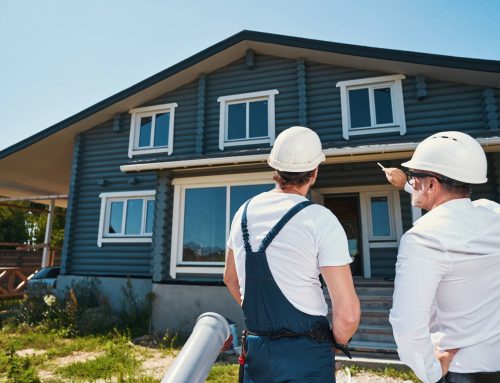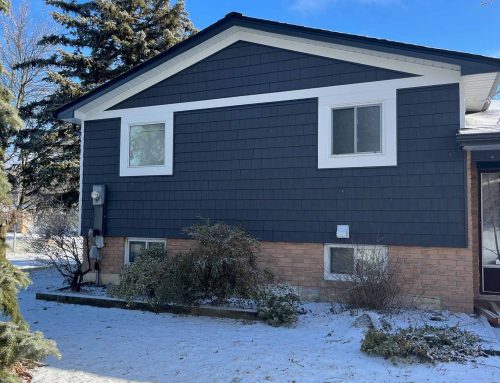Your home is more than simply a place to sleep, it is a haven that gives comfort, security, and a reflection of your particular style. Your home’s siding is not only an important part of its visual appeal, but it also serves as an essential protective barrier from the weather. Wear and tear on your siding might compromise its performance and overall look over time. There are primary indicators that it is time to consider getting new siding for your home. You may improve the beauty, durability, and value of your property while assuring its long-term protection by identifying these symptoms and adopting proactive actions.
1. Blisters or bubbles
It is essential to pay great attention if you discover any sign of blisters or bubbles beneath the surface of your siding. These odd objects are more than simply aesthetic imperfections, they can serve as warning signs of a possible moisture penetration problem. Bubbles and blisters on your siding indicate that water has been trapped within, indicating a moisture issue that must be handled immediately. When you discover such patterns on your siding, you should act quickly. To begin, look into the cause of the moisture incursion. It might be the consequence of a bad installation, broken caulking, or even structural difficulties. Once you have discovered the source, it is best to address the issue as soon as possible to avoid more water damage.
Often, replacing the damaged siding is the most effective remedy. You can repair the protective barrier surrounding your home and keep moisture at bay by investing in new, high-quality siding. Modern siding materials provide increased durability, weather resistance, and moisture control, giving you peace of mind and long-term protection. It is also worth thinking about upgrading to siding materials that are particularly engineered to prevent moisture-related difficulties. Certain forms of siding, such as fiber cement or vinyl siding, offer high water resistance and are less prone to blistering or bubbling. These materials are built to endure extreme weather conditions and provide excellent moisture control, keeping your home secure and dry.
2. Unwanted sound effects
The last thing you want to hear when you sit back and relax in your home is rattling or clattering sounds coming from your siding when the wind blows. If you are hearing such obnoxious noises, it might be a sign that your siding is loose or poorly installed. However, there is excellent news and you do not need to worry! You could not only say goodbye to the noise but also improve the general tranquility and energy efficiency of your home by investing in new siding.
When wind gusts pass through or temperature changes, it can cause the siding to expand and compress, loose or improperly installed siding may generate a symphony of sound. These disturbances not only disturb the calm and serenity of your home, but they also point to a larger issue, inadequate sealing. When your siding is not correctly sealed, it exposes your home to drafts, moisture, and energy loss, reducing the comfort and efficiency of your living area. You may convert your home into a serene retreat by replacing your existing siding with new, well-installed siding. New siding is not only firmly connected, but it is also weather resistant. Its meticulous installation guarantees that no gaps or loose portions exist, effectively protecting your property from outside forces. You can experience a calmer environment that encourages relaxation and peace of mind in the absence of rattling and clattering.
3. Peeling paint
Is the once-perfect paint on your siding flaking or chipping? Peeling paint is more than just an ugly defect, it may also be a warning sign of underlying siding issues. When moisture penetrates the layers of your siding, it can cause a variety of issues, including bubbling and peeling paint. Peeling paint not only detracts from the aesthetic of your home, but it also exposes your siding to further harm. Peeling paint is frequently a sign of weakened siding because it suggests that moisture has penetrated the protective layers. When moisture penetrates your siding, it progressively undermines its structure, leading to more serious problems including rot, mold development, and even structural damage. Furthermore, when the paint on your siding begins to peel, it no longer serves as an effective barrier against the weather, enabling moisture to infiltrate deeper into the siding material.
If you detect peeling paint on your siding, it is best to determine whether it is time to repair your siding to successfully safeguard your home. You can address the core source of the problem and avoid more damage to your home’s exterior by acting quickly. Investing in new siding will not only restore your home’s cosmetic appeal but will also provide a strong defense against moisture, assuring the durability and integrity of your property. Furthermore, choosing new siding brings you intriguing opportunities for improving your home’s exterior appeal. You can change the entire design of your home and give it a fresh, updated appearance by selecting from a variety of colors, textures, and styles. Whether you want a classic, timeless style or a modern, sleek design, there is a siding choice to suit your aesthetic tastes.
4. Cracks and warping
Have you ever checked your home’s siding closely and discovered cracks, warping, or splits? These visual indicators of wear and tear should not be ignored since they might suggest underlying problems that could have serious ramifications for your property. Cracked or warped siding not only detracts from the aesthetic appeal of your home, but it can also enable moisture to leak into the structure of your home. Moisture intrusion may cause water damage, stimulate the growth of hazardous molds, and even jeopardize the structural integrity of your walls.
Ignoring these symptoms of major damage or degradation in your siding is a risk that might result in more extensive and costly problems later on. Recognizing these challenges as a warning sign allows you to take proactive efforts to solve them quickly and efficiently. Consider new siding alternatives to restore the protective barrier surrounding your property and avoid future structural damage. Replacing outdated and damaged siding with new, high-quality materials will help insulate your home. Improved insulation not only helps to adjust the temperature within your home, but it also helps with energy efficiency. New siding can help you cut your energy expenses and offer a more pleasant living environment year-round by lowering heat loss in the winter and minimizing heat gain in the summer.
5. Hidden Damage – the need for a professional inspection
When embarking on the exciting journey of homeownership, it is critical to know that the indications suggesting the need for siding replacement are not always visible. While apparent fractures, fading hues, and peeling paint are obvious signs of deteriorating siding, there are concealed issues that only a skilled eye can spot. Hidden defects, such as moisture penetration or structural challenges, can have a substantial influence on your home’s integrity. That is why it is critical to consider contacting a trained contractor or siding specialist to conduct a complete examination. It is preferable to be proactive rather than reactive when it comes to the condition of your siding. Even if you do not see any obvious symptoms of harm, it is a good idea to be cautious and address any concerns you have. You may acquire vital insights into the real health of your siding and find any hidden flaws that may be lying beneath the surface by bringing in a certified specialist for a full evaluation.
Structure problems may be hidden beneath the surface of your siding. Issues with your home’s underlying structure, such as decaying wood or weakened support, can have a significant influence on its stability and safety. Before installing new siding, an expert contractor or siding specialist may analyze the condition of the underlying structure and decide whether any repairs or reinforcements are required. By choosing a professional inspection, you gain peace of mind knowing that you are making an informed decision about the state of your siding. If any hidden problems are identified, you can address them promptly, preventing further damage.
It is best not to wait for the indicators to become obvious, take action, talk with specialists, and give your home the renovation it deserves with high-quality siding that will improve its attractiveness while also providing long-term durability. Remember that investing in new siding is an investment not just in your home, but also in your peace of mind and the long-term worth of your property.






